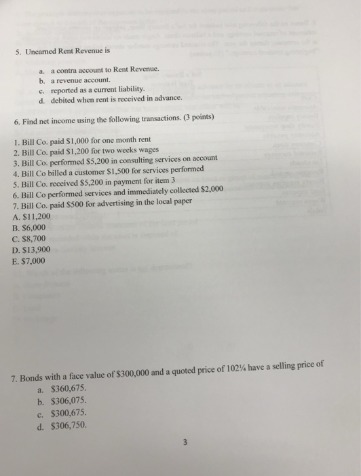
In this equation, accounts receivable is considered an asset as it indicates the expected cash inflows a company is due to receive. As customer payments are received, accounts receivable decreases, while the cash received increases the company’s cash balance. In conclusion, accounts receivable is a crucial aspect of a company’s financial management. Proper handling of AR can contribute significantly to a business’s cash flow, customer relationships, and overall financial health.
Aging Schedule
Going through lockbox files to apply payments to invoices still takes work. Most B2B businesses still accept a significant volume of paper checks, with a recent survey by AFP pointing to 92% of organizations continuing to use checks for incoming payments. To support this, businesses will often resort to managing multiple lockboxes (where a bank receives and processes checks for you).
Financial Statements and Impact
Timely and accurate billing and professional communication regarding payments build trust and confidence in business-client relationships. DSO can vary significantly across industries and businesses, so it’s essential to consider context when interpreting this metric. It is also crucial to track DSO over time and compare it against industry benchmarks to assess a company’s performance.
Identify the goal for automation
- This is usually the last resort, but if you have tried all of the other tips in this article and still haven’t managed to get your money back, then it may be time to call in the professionals.
- When it becomes clear that an account receivable won’t get paid by a customer, it has to be written off as a bad debt expense or a one-time charge.
- Effective credit policies necessitate periodic reviews, encompassing benchmarking, escalation procedures, and customer credit scoring, which can ultimately boost revenue.
- Accounts receivable automation works with ERP systems by connecting through APIs or direct integrations.
Streamlining invoicing processes can prevent billing errors and ensure invoices reach customers. But if some of them pay late or not at all, they might be hurting your business. Late payments from customers are one of the top reasons why companies get into cash flow or liquidity problems. A good accounting system with tools for managing invoice accounts receivable can help you get paid faster, so you can focus on running your business. The April 6 transaction removes the accounts receivable from your balance sheet and records the cash payment.
This report groups your accounts receivable balances based on the age of each invoice. A typical ageing schedule will group outstanding invoices based on 0 to 30 days, 30 to 60 days, etc. The goal is to minimise the amount of receivables that are old, particularly those invoices that are over 60 days old. You’ll read about accounts receivable turnover, the ageing schedule, and how to increase cash flow. Revamping your order-to-cash process offers improved cash flow, enhanced customer experience, increased efficiency, reduced errors, better compliance, and boosted employee productivity.
A guide to accounts receivable management
In most cases, it is important to be persistent and politely remind your customer of the urgency in making payment as soon as possible. Ensure that a commitment to quality permeates every aspect of your operations, from production and logistics to inventory management and your finance department. Bank reconciliation involves managing various remittance formats, including addressing missing remittances. This task can be time-consuming and prone to errors if not organized properly. When receivables slow down, it becomes challenging for your company to meet its ongoing business requirements. Effective credit policies necessitate periodic reviews, encompassing benchmarking, escalation procedures, and customer credit scoring, which can ultimately boost revenue.

Join the 50,000 accounts receivable professionals already getting our insights, best practices, and stories every month. Finally, optimized AR management creates a more efficient accounting team focused on strategic initiatives rather than administrative duties. The first step in choosing a debt recovery specialist is to do your research.

Accounts receivable automation works with ERP systems by connecting through APIs or direct integrations. This integration ensures smooth data synchronization between platforms, automates the creation of invoices, updates payment statuses instantly, and consolidates financial information. Automation in finance is needed to reduce manual intervention and streamline processes such as accounting, financial planning & analysis, and reporting. It reduces manual work, saves time, minimizes errors, and optimizes processes using technologies like RPA, AI, and predictive analytics.
It helps you track, monitor, and on-time action on overdue/long-pending bills resulting in an increased inflow of cash that is essential for business growth. The formula to calculate accounts receivable is typically the sum of all outstanding invoices owed to the company by its customers. It can also be calculated using the Accounts Receivable Turnover Ratio, which is net credit sales divided by the average accounts receivable balance during the period. This ratio helps measure the efficiency of the company’s credit and collections practices. When evaluating accounts receivable automation software, businesses should look for options that reduce the manual efforts involved in managing unpaid invoices, late payments, and bad debts.
Efficiently manage your credit risk by leveraging AI-based automation tools to fast-track reviews. Identify external bankruptcy alerts, negative payment trends, and credit utilization thresholds. Fifty-five percent of AR professionals say dispute management is their most difficult task. Making this AR management process accounting 205 vocab flashcards easier can improve both employee happiness and resource management internally, and customer experience on the external side. When you do sales on credit, you would certainly need to keep track of the due amounts that your parties owe you. Receivable management helps increase sales resulting in increased profitability.
This is because their clients either underpay them or pay incorrectly due to not following the terms set. It can also be because they are simply unable to make the payment due to their own financial setbacks. Firms that are typically paid over a period is it possible to lower my effective tax rate what are my options of months will have a larger amount of receivables in the 60-day category. Limited visibility and data analysisLack of real-time visibility into payment statuses and trends makes it challenging to identify issues promptly and miss valuable insights.
This comprehensive approach ensures a smooth and efficient management of accounts receivable throughout the entire customer lifecycle. That is, they deliver the goods and services immediately, send an invoice, then get paid a few weeks later. Businesses keep track of all the money their customers owe them using an account in their books called accounts receivable. Accounts payable is a current liability on the balance sheet, while accounts receivable is a current asset. If your accounts receivable balance is going up, that means you’re invoicing more. If the balance is going down, that means you’re collecting customer payments from previous invoices.
Accounts receivable, or AR, is the balance of money due to a business for goods or services delivered or used, but not paid for yet by the buyer. You can make things easy by providing multiple payment options, such as credit cards and ACH payments. Flexibility increases the likelihood of receiving timely payments but also enhances customer satisfaction.
A comprehensive understanding of accounts receivable is crucial for businesses operating on a credit basis, where customers receive goods or services before making their payment. Efficient management of AR helps maintain positive cash flow and reduces the risk of bad debt. The main objective of accounts receivable management is to ensure the timely collection of payments for goods or services provided to customers. Good AR management practices can minimize bad debts, reduce the number of overdue payments, and improve cash flow. At its core, accounts receivable management ensures that an organization promptly receives payments for goods and services. Effective accounts receivable management is crucial for maintaining a healthy cash flow and minimizing the risk of bad debt.
Ready to transform your accounts receivable management system with HighRadius? Schedule a demo today and discover how our autonomous solutions can boost your efficiency and financial success. Many collection issues stem from customer dissatisfaction with post-sales support. As a member of the finance team, you should ensure that all sales-related documentation reaches the customers timely. The disparity between the goals of the sales and finance departments can lead to conflicts.
Automation enhances the customer experience by offering self-service options and instant pre-built responses. Customers can view invoice statuses, make payments, and raise disputes or queries, all through automated customer portals. A lower percentage of accounts receivable remaining open indicates that more invoices are being settled, which in turn improves your cash flow and financial stability. A high CEI indicates that your collections team is effective in recovering receivables. It’s a crucial metric that directly correlates with your cash flow and liquidity. If a customer raises an issue, it’s crucial to initiate the dispute resolution process promptly to prevent further delays and maintain good customer relations.
This will give you more options for collections, such as repayment plans or debt recovery services. When it comes to managing accounts receivable, it is important to remember that this process is not just about collecting payments from customers. It is also about maintaining a good relationship with your clients, ensuring that they always have trust in your company. HighRadius offers a range of AI-powered solutions that cater to companies of all sizes across various industries. Accounts receivable is any amount of money your customers owe you for goods or services they purchased from you in the past. This money is typically collected after a few weeks and is recorded as an asset on your company’s balance sheet.
Managing accounts receivable effectively is essential for ensuring the long-term success of a business by maintaining working capital and minimizing bad debt. By utilizing tools like an aging schedule and implementing a systematic collections process, businesses can better manage their receivables, ensuring timely payments and strong cash flow. Managing accounts receivables efficiently will benefit correcting employment taxes using form 941 the business in several ways. The most important is the increased cash inflow by a faster realization of sales to cash. It also helps you to build a better relationship with your customer by not having discrepancies in pending bills and mitigates the risk of bad debts. All these require you to be top of your account’s receivables and you can easily achieve this by using accounting software.



